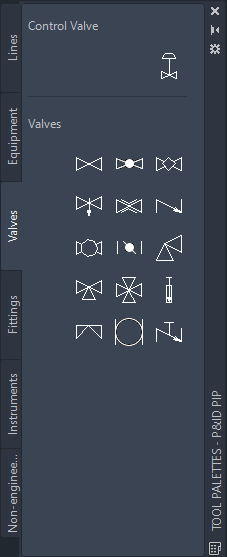By combining various types of components (such as pumps, tanks, and valves) and lines (such as pipe lines and signal lines), you create a dynamic P&ID drawing, from which you can produce and edit data reports.
Each P&ID component and line has an assigned layer name, color, scaling factor, tagging behavior, and other properties that are set up as part of your project so that you are not required to assign properties each time you place a component or line in a drawing.
P&ID components include:
- Equipment (such as pumps, tanks, and vessels)
- Nozzles (such as flanged or flow)
- Instruments (such as control valves, flow meters, and instrument bubbles)
- Inline components (such as valves and reducers)
- Non-engineering items (such as connectors, flow arrows, and other items that are placed on a drawing but do not contain any reportable data)
P&ID schematic lines include:
- Pipe lines (such as primary line segments, secondary line segments, and jacketed pipe segments)
- Signal lines (such as electrical, hydraulic, and pneumatic)
Understand P&ID Component and Line Symbols
The product includes a set of component and line symbols that are based on P&ID industry standards, PIP (Process Industry Practices), ISA (Instrument Society of America), ISO (International Organization for Standardization), DIN (Deutsches Institut Fur Normung e. V. ), and JIS (Japanese Industrial Standards).

Understand Component and Line Creation
If you use components and lines that are not part of the symbol libraries provided with the program, it is likely that your administrator created those symbols and added them to the tool palette while setting up your project.
Rather than creating your own components and lines, you should use either the default symbols or those symbols provided by your administrator. Otherwise, you cannot be sure that the symbols comply with your company standards or are included in your tool palette and in reports.
If you must use an AutoCAD object in your P&ID drawing, you can convert the AutoCAD object to a P&ID component or line.